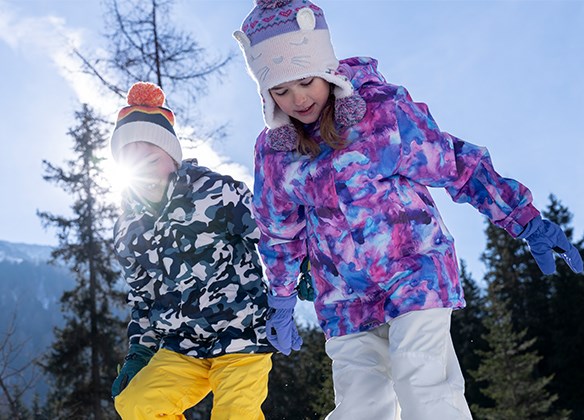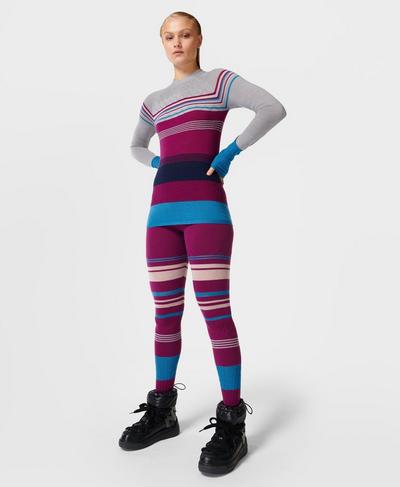Top Advice To Selecting Merino Wool Base Layers For Hiking
Wiki Article
What Merino Sheep Breeds Exist And What Is Their Distinctive Characteristic And Their Quality?
There are a variety of varieties of Merino sheep, each having its unique characteristics and qualities. Here are a few of the most well-known Merino sheep breeds. Spanish Merino- The Spanish Merino has a long history and is known for its fine yarn and high yield. The breed is tolerant of every environment and boasts an extremely high degree of resistance to diseases.
American Merino- American Merino is a breed of Merino that was created in the United States in 1921. It is famous for its silky wool and toughness. This breed is specifically suited to cold climates , and is resistant to many common sheep diseases.
Saxon Merino- The Saxon Merino is a very delicate-boned breed of Merino sheep, which is renowned for its extremely soft and fine wool. The Merino breed is typically smaller than other Merino and is well-suited for hot and dry environments.
Peppin Merino: The Peppin Merino, one of the Australian breed, was created in 1903. This breed is perfectly suited to Australia's dry and hot climate due to its wool's superior quality.
Rambouillet - Rambouillet, a Merino sheep breed, was created in France during the late 18th century. This breed is known for its durability and adaptability to a vast variety of conditions. Rambouillet wool is generally rougher than the other Merino species, but it's still very prized for its exceptional quality.
Polwarth - Polwarth, a Merino sheep breed, was first introduced to Australia in 1922. This breed is famous for its silky and warm, shiny wool. It is particularly suited to the cooler, more humid climate of southern Australia.
The Merino shearers' distinctive traits and capabilities are based on their breed and the surroundings they live in. Breeders pick Merino traits like fine wool and hardiness to create the first Merino breeds that are suitable for various conditions and needs.

What Are The Different Types Of Wool Base Layers Made From Merino Used In Clothing
Due to its natural anti-odor properties, moisture-wicking characteristics in addition to breathability and breathability Merino Wool is a preferred option for base layering clothing. Here are a few Merino sheep wool base layers. These lightweight Merino wool base layer are ideal for mild to moderate weather. They're typically made of a lightweight and breathable fabric that makes them simple to layer with other garments.
Midweight base layers - Midweight Merino wool base layers are designed for colder temperatures. They are often made from larger, warmer, and more insulating fabrics that offer warmth and comfort during colder temperatures.
Heavyweight base layers - Heavyweight Merino wool base layers are designed for use in cold weather conditions. They are made of heavy, warm fabrics that provide insulation and protection from elements.
3/4 length base layers- 3/4 long Merino wool layer base layers are designed for warmth and comfort, however they are not bulky. They are ideal to layer under shorts or trousers in colder weather.
Long sleeves base layers - Long sleeve Merinowoo's base layers are created to offer warmth and comfort. They are made of lightweight, breathable material and are able to be worn over clothing for additional warmth.
Hooded base layers- Hooded Merino wool base layers are made to offer additional warmth and shield from the elements. They typically have a hood with a fitted design that can be worn underneath the helmet or in conjunction with other headwear.
Zip-neck base layers - Zipneck Merino wool layer layers are designed to regulate temperature. They often feature an open neckline that can be closed or open according to the weather conditions.
In general, Merino wool base layers are available in a wide variety of styles and weights to meet different requirements and preferences. Take into consideration the weather conditions as well as the level of activity to determine the weight and style that best suit your needs when choosing Merino wool base layers. Go find women's ski clothes at koraoutdoor.com for site examples.

What Is The Best Combination Of Ski And Mid Layer Clothing With Regard To Merino Wool And Himalayan Yak Wool
Your preferences and the weather will determine the best combination of Merino and Himalayan wool mid-layers. Here are a few suggestions. The Merino base layer and Himalayan wool mid-layer offer excellent control of moisture and regulate temperature. This will allow for more insulation as well as warmth.
Merino wool mid-layer as well as Himalayan yak wool mid-layer- This is a good option for weather that is unpredictable that require you to adjust your layers throughout the day. Merino Wool's mid-layer provides warmth, moisture management, as well as the Himalayan Jak Wool mid-layer can provide an additional layer of insulation if needed.
Merino wool base layer and Merino mid-layer. Himalayan yakwoo mid-layer. This is a great combination for colder temperatures or those more sensitive to cold. The Merino wool base layer is designed to provide moisture management and temperature regulation as well as temperature control. The Merino wool mid-layer adds an extra layer of warmth and control of moisture. The Himalayan Yak wool mid-layer will provide an additional layer of insulation as well as warmth.
Layering is a personal preference. This means that the best mix of layers you should choose will differ depending on your body type and level , as well as the weather conditions. It is essential to choose layers that feel comfortable and allow you to easily move about while skiing. Go go to koraoutdoor.com for thermal ski clothes for blog examples.
Why Should You Pick Merino Or Himalayan Yak Wool Over Other Fabrics For Your Ski Clothing?
Merino and Himalayan wools are excellent choices for ski clothing. Warmth - Merino and Himalayan wools are both highly efficient insulation. They can keep you warm even in the coldest of conditions. They are lightweight and comfy, yet provide excellent insulation.
Moisture management - Merino wool, Himalayan Yak wool, and Merino wool are all efficient at controlling the water. This means that they will keep you dry when skiing. Both wools are moisture-wicking in nature, which means they draw moisture away from your skin, and then transfer it to the outer layers of the fabric, where it will evaporate.
Breathability Merino wool (and Himalayan Yok wool) are both extremely and breathable. The fabric lets air to circulate and helps to regulate body temperature and prevent heat buildup. This is crucial when you are wearing ski clothes, because it lets you be comfortable while skiing.
Comfort- Merino wool as well as Himalayan yak wool are both naturally gentle and comfortable, making them perfect for wear close to your skin. They are extremely stretchy and flexible which allows for full movement and mobility.
SustainabilityThe sustainability of Merino wool as well as Himalayan yak wool are both natural, sustainable fibers that are biodegradable and recyclable. These fibers are more sustainable than synthetic ones like nylon or polyester, and they are also less harmful to the earth.
Merino wool or Himalayanyak wool are excellent choices for ski clothes. They are warm, sweat-wicking, breathable and comfortable. This makes them an ideal choice for skiers who wish to feel comfortable and safe.
